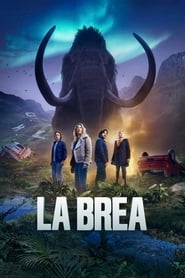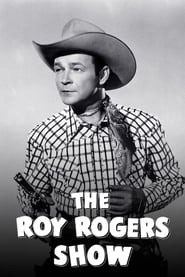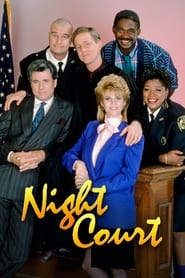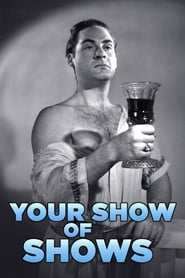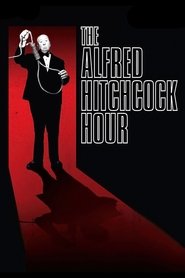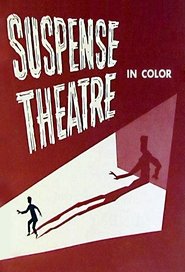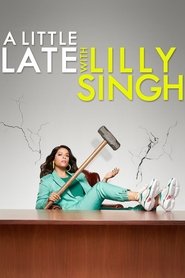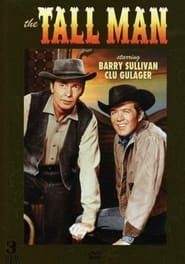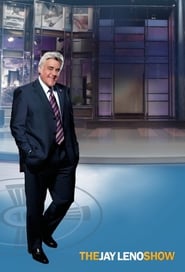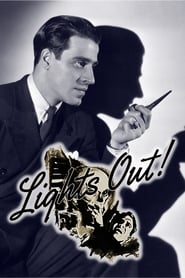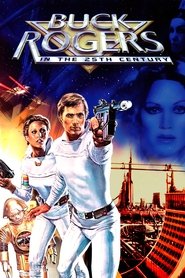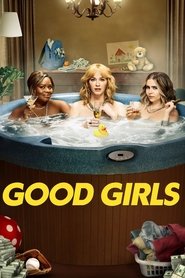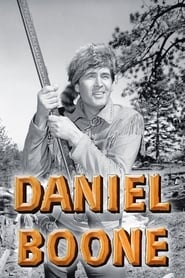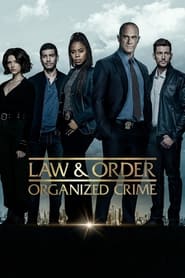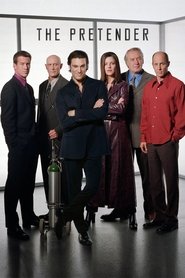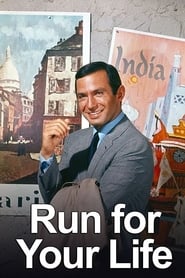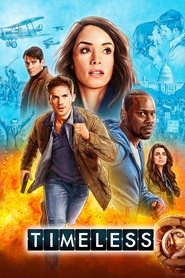Nbc TV Series - Page 8
-
La Brea
2021
star 7.5An epic adventure begins when a massive sinkhole opens in the middle of Los Angeles, pulling hundreds of people and buildings into its depths. Those who fell in find themselves in a mysterious and dangerous primeval land, where they have no choice but to band together to survive. Meanwhile, the rest of the world desperately seeks to understand what happened. In the search for answers, one family torn apart by this disaster will have to unlock the secrets of this inexplicable event to find a way back to each other. -
The Roy Rogers Show
1951
star 6.4Roy Rogers is the owner of the RR Ranch in the Mineral City area, which he runs with the help of the German shepherd dog Bullet and his horse Trigger. Roy, supported by his friend Pat Brady, is often helping the weakest usually threatened by cattle thieves, dishonest sheriffs and villains of various kinds. Pat Brady works as a cook at the Eureka Café, owned by Dale Evans. -
Night Court
1984
star 7.3An eccentric fun-loving judge presides over an urban night court and all the silliness going on there. -
Your Show of Shows
1950
star 5.5Your Show of Shows was a live 90-minute variety show that was broadcast weekly in the United States on NBC, from February 25, 1950, until June 5, 1954, featuring Sid Caesar and Imogene Coca. Other featured performers were Carl Reiner, Howard Morris, Bill Hayes, Judy Johnson, The Hamilton Trio and the soprano Marguerite Piazza. José Ferrer made several guest appearances on the series. The series was telecast from the now-demolished International Theatre at 5 Columbus Circle and the Century Theater, now demolished, in New York. During 2002, Your Show of Shows was ranked #30 on TV Guide's 50 Greatest TV Shows of All Time. -
The Alfred Hitchcock Hour
1962
star 7.8A continuation of the anthology series “Alfred Hitchcock Presents”, hosted by the master of suspense and featuring thrillers and mysteries. -
Kraft Suspense Theatre
1963
star 5.3Kraft Suspense Theatre is an American anthology series that was telecast from 1963 to 1965 on NBC. Sponsored by Kraft Foods, it was seen three weeks out of every four and was pre-empted for Perry Como's Kraft Music Hall specials once monthly. Como's production company, Roncom Films, also produced Kraft Suspense Theatre. Writer, editor, critic and radio playwright Anthony Boucher served as consultant on the series. Later syndicated under the title Crisis, it was one of the few suspense series telecast in color at the time. While most of NBC's shows were in color then, all-color network line-ups did not become the norm until the 1966-67 season. -
A Little Late with Lilly Singh
2019
star 3.7The comedian, actress, social media sensation, producer and author of "How to Be a Bawse: A Guide to Conquering Life," Lilly Singh brings her unique perspective to late night as she hosts celebrity interviews, talks current events, performs musical and sketch comedy, plays games, and more. -
The Tall Man
1960
star 6.3The Tall Man is a half-hour American western television series about Sheriff Pat Garrett and the gunfighter Billy the Kid that aired seventy-five episodes on NBC from 1960 to 1962, filmed by Revue Productions. -
Bob Hope Presents the Chrysler Theatre
1963
star 5.5Bob Hope Presents the Chrysler Theatre is an American anthology series, sponsored by Chrysler Corporation, which ran on NBC from 1963 through 1967. The show was hosted by Bob Hope, but it had a variety of formats, including musical, dramatic, and comedy. -
The Jay Leno Show
2009
star 3.6The Jay Leno Show is an American comedy show created by and starring Jay Leno, that aired at 10 p.m. from September 14, 2009 to February 9, 2010 on NBC, after Leno's initial retirement from hosting The Tonight Show with Jay Leno. In January 2010, NBC announced that due to affiliate concerns about its effect on their newscasts, The Jay Leno Show would be shortened to 30 minutes and moved from primetime to 11:35 p.m., the timeslot that had been occupied by The Tonight Show for nearly 60 years. The Tonight Show host Conan O'Brien released a public statement saying that he would not participate in moving Tonight to 12:05 a.m., asserting that it would damage the highly respected franchise. Despite much support for O'Brien from both the public and media professionals alike NBC maintained its plan to move Leno to 11:35. On January 21, 2010, NBC reached a $45 million settlement with O'Brien in order to end his contract. Leno resumed his duties as host of Tonight on March 1, 2010. Leno ended on February 9, 2010 after being -
Lights Out
1949
star 5.3Lights Out was an extremely popular American old-time radio program, an early example of a network series devoted mostly to horror and the supernatural, predating Suspense and Inner Sanctum. Versions of Lights Out aired on different networks, at various times, from January 1934 to the summer of 1947 and the series eventually made the transition to television. In 1946, NBC Television brought Lights Out to TV in a series of four specials, broadcast live and produced by Fred Coe, who also contributed three of the scripts. NBC asked Cooper to write the script for the premiere, "First Person Singular", which is told entirely from the point of view of an unseen murderer who kills his obnoxious wife and winds up being executed. Variety gave this first episode a rave review ("undoubtedly one of the best dramatic shows yet seen on a television screen"), but Lights Out did not become a regular NBC-TV series until 1949. -
Buck Rogers in the 25th Century
1979
star 720th-century astronaut Buck Rogers awakens in the 25th century after a freak accident puts him in suspended animation for 500 years. Upon returning to Earth and discovering the planet is recovering from a nuclear war, Buck uses his combat skills and ingenuity to protect Earth and fight evil throughout the galaxy alongside starfighter pilot Colonel Wilma Deering and robot companion Twiki. -
Good Girls
2018
star 7.9Three "good girl" suburban wives and mothers suddenly find themselves in desperate circumstances and decide to stop playing it safe and risk everything to take their power back. -
Daniel Boone
1964
star 6.9Daniel Boone is an American action-adventure television series starring Fess Parker as Daniel Boone that aired from September 24, 1964 to September 10, 1970 on NBC for 165 episodes, and was made by 20th Century Fox Television. Ed Ames co-starred as Mingo, Boone's Cherokee friend, for the first four seasons of the series. Albert Salmi portrayed Boone's companion Yadkin in season one only. Dallas McKennon portrayed innkeeper Cincinnatus. Country Western singer-actor Jimmy Dean was a featured actor as Josh Clements during the 1968–1970 seasons. Actor and former NFL football player Rosey Grier made regular appearances as Gabe Cooper in the 1969 to 1970 season. The show was broadcast "in living color" beginning in fall 1965, the second season, and was shot entirely in California and Kanab, Utah. -
Law & Order: Organized Crime
2021
star 7.9The detectives of the Organized Crime Control Bureau work to dismantle New York City's most vicious and violent illegal enterprises. -
The Pretender
1996
star 7.4Raised in a secret facility built for experimenting on children, Jarod is a genius who can master any profession and become anyone he has to be. When he realizes as an adult that he's actually a prisoner and his captors are not as benevolent as he's been told, he breaks out. While trying to find his real identity, Jarod helps those he encounters and tries to avoid the woman sent to retrieve him. -
Run for Your Life
1965
star 7.2Run for Your Life is an American television drama series starring Ben Gazzara as a man with only a short time to live. It ran on NBC from 1965 to 1968. The series was created by Roy Huggins, who had previously explored the "man on the move" concept with The Fugitive. -
Timeless
2016
star 7.2A mysterious criminal steals a secret state-of-the-art time machine, intent on destroying America as we know it by changing the past. Our only hope is an unexpected team: a scientist, a soldier and a history professor, who must use the machine's prototype to travel back in time to critical events. While they must make every effort not to affect the past themselves, they must also stay one step ahead of this dangerous fugitive. But can this handpicked team uncover the mystery behind it all and end his destruction before it's too late? -
A.P. Bio
2018
star 6.9When disgraced Harvard philosophy scholar Jack Griffin loses out on his dream job, he is forced to return to Toledo, Ohio, and work as a high school Advanced Placement biology teacher.
